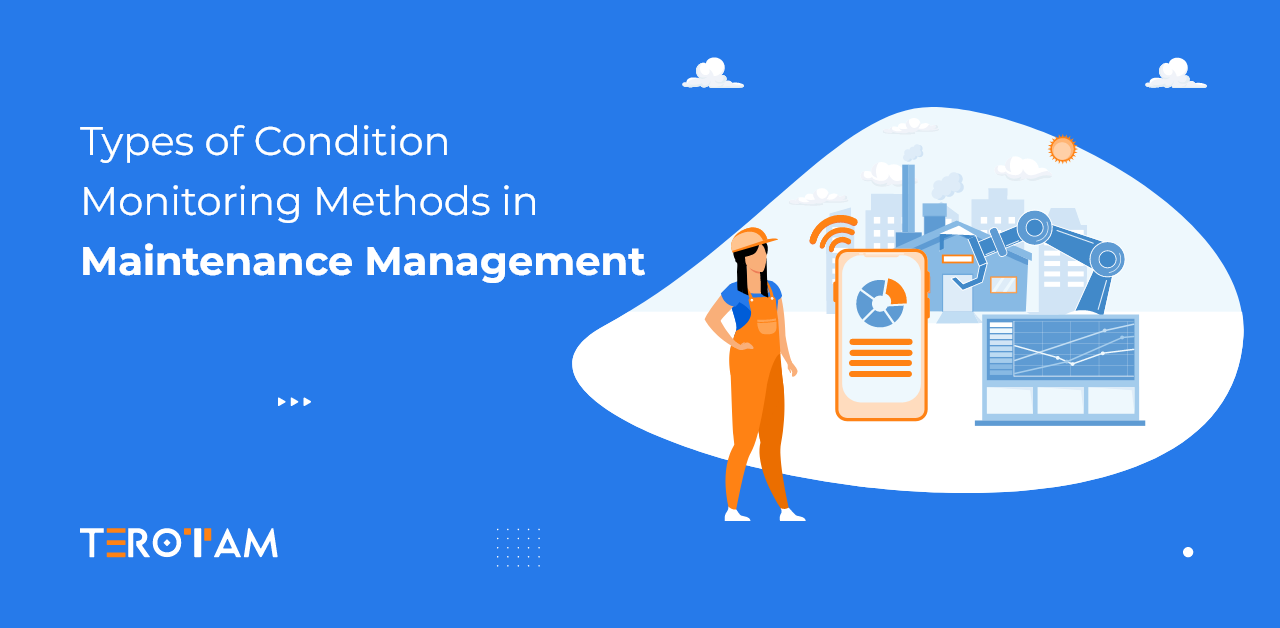Effective maintenance management is becoming increasingly critical as industries adopt more complex and high-value equipment. Ensuring uninterrupted operations and minimizing equipment failures are essential to maintaining productivity and reducing operational costs. Modern maintenance strategies are no longer limited to reactive repairs; they now focus on anticipating issues before they arise. This shift from reactive to proactive maintenance practices extends equipment lifespan and helps reduce unplanned downtime, optimize resource allocation, and improve overall system reliability. As businesses face tighter performance demands, the importance of an efficient and structured maintenance management system has never been greater.
A key component of proactive maintenance strategies is predictive maintenance, with condition monitoring serving as the foundation. Condition monitoring involves the continuous or periodic assessment of machinery health through a variety of diagnostic techniques. These methods allow for the early detection of potential failures, enabling timely interventions before major issues occur. Condition monitoring uses a range of techniques, such as vibration analysis, thermography, ultrasonic testing, and oil analysis, to evaluate equipment performance in real-time.
In this article, we will explore these condition monitoring methods in detail, discuss their specific benefits, and examine how they can be integrated into maintenance management systems to enhance equipment reliability and operational efficiency.
Growing Importance of Condition Monitoring in Maintenance Management
Several factors contribute to the rising significance of condition monitoring in maintenance management:
Complexity of Assets: Modern industrial equipment has become increasingly sophisticated, making traditional maintenance approaches insufficient. Condition monitoring provides real-time insights into asset performance, allowing maintenance teams to make informed decisions. As the complexity of equipment increases, the need for effective monitoring becomes crucial.
Shift to Preventive Maintenance: A growing number of organizations are shifting away from reactive maintenance strategies towards more preventive and predictive approaches. Condition monitoring is central to this evolution, enabling companies to implement maintenance practices that enhance reliability and reduce downtime. This proactive approach not only increases operational efficiency but also aligns with contemporary business goals focused on productivity.
Cost Pressures: With ongoing pressure to cut operational costs while maintaining productivity, organizations are recognizing the value of condition monitoring. By identifying potential issues before they escalate into costly failures, companies can avoid expensive repairs and disruptions. This proactive approach ensures that maintenance activities are conducted only when necessary, leading to better resource allocation.
Regulatory Compliance and Safety: Many industries operate under stringent regulatory requirements and safety standards. Condition monitoring helps organizations meet these standards by providing documented evidence of equipment health and performance. In sectors like oil and gas, pharmaceuticals, and manufacturing, compliance is essential to avoid penalties and ensure worker safety.
Technological Advancements: The rise of IoT, big data analytics, and machine learning has revolutionized condition monitoring practices. Real-time data collection from connected devices facilitates accurate monitoring and predictive analysis, allowing organizations to track equipment health effectively. These technological advancements support the adoption of sophisticated monitoring techniques and foster a culture of continuous improvement.
Focus on Sustainability: With increasing emphasis on sustainability and environmental responsibility, efficient maintenance strategies are more critical than ever. Condition monitoring optimizes equipment performance, reduces energy consumption, and minimizes waste. By extending asset lifespan and enhancing efficiency, organizations can achieve their sustainability goals while also lowering operational costs.
Key Techniques in Condition Monitoring
Condition monitoring employs various diagnostic techniques to track the health and performance of machinery, allowing for early identification of potential failures. These techniques help organizations shift from reactive to predictive maintenance, reducing the risk of unexpected breakdowns. In this section, we are focusing on the most commonly used methods, each offering distinct advantages depending on the type of equipment and operational requirements.
Vibration Analysis
Vibration analysis serves as one of the most prevalent condition monitoring techniques. This approach involves measuring vibrations produced by machinery and analyzing the data to identify abnormal patterns. Key elements include:
- Sensors: Accelerometers are widely used to capture real-time vibration data. Mounted on machinery, these sensors continuously monitor vibrations.
- Data Analysis: Techniques such as Fast Fourier Transform (FFT) enable frequency analysis, identifying specific patterns related to mechanical issues like imbalance, misalignment, or bearing wear.
- Interpretation: Engineers analyze vibration signatures against baseline measurements to detect deviations that indicate potential faults.
Benefits of Vibration Analysis
- Early detection of mechanical issues like misalignment and bearing wear.
- Reduction of unplanned downtime by addressing potential failures.
- Extended equipment lifespan through timely maintenance.
- Increased safety by preventing catastrophic failures.
- Improved overall efficiency by optimizing equipment performance.
Thermography
Thermography employs infrared cameras to capture thermal images of equipment, helping identify hotspots and thermal anomalies indicative of underlying issues. Important aspects include:
- Heat Distribution: This analysis provides insights into machinery heat distribution, revealing areas of overheating that may signal electrical faults or lubrication failures.
- Non-Destructive Testing: Thermography operates as a non-contact method, allowing safe monitoring of equipment without disrupting operations.
- Periodic Monitoring: Regular thermographic inspections establish thermal baselines, making it easier to detect changes over time.
Benefits of Thermography
- Immediate identification of overheating components before failure.
- Enhanced safety by mitigating fire hazards related to electrical faults.
- Non-contact inspection that does not disrupt ongoing operations.
- Extended lifespan of equipment by addressing thermal anomalies early.
Ultrasonic Testing
Ultrasonic testing utilizes high-frequency sound waves to detect faults within materials and components. This technique is particularly effective for identifying issues in bearings, leaks, and structural integrity. Key elements include:
- Transducers: These devices generate ultrasonic waves that penetrate materials, with reflections from flaws measured to assess their size and nature.
- Data Interpretation: The time taken for ultrasonic waves to return provides crucial information about the detected flaw.
- Applications: Common uses include monitoring steam traps, detecting gas leaks, and assessing the condition of mechanical components.
Benefits of Ultrasonic Testing
- Prevention of leaks and structural failures, ensuring system integrity.
- Non-destructive testing that preserves equipment during inspection.
- Real-time monitoring for immediate feedback on equipment condition.
- Reduced maintenance costs by catching problems before they escalate.
Oil Analysis
Oil analysis involves examining lubricants and hydraulic fluids to assess machinery condition. This technique offers valuable insights into wear patterns, contamination, and oil degradation. Key aspects include:
- Sample Collection: Regular oil sample collection allows consistent monitoring of lubricant health.
- Laboratory Testing: Analyzing samples for contaminants and wear particles reveals the internal condition of machinery.
- Predictive Maintenance: Trends in oil analysis can indicate when maintenance or replacement of components is necessary, preventing failures.
Benefits of Oil Analysis
- Early detection of wear and tear on internal components.
- Prolonged equipment lifespan through proper lubrication management.
- Reduced maintenance costs by preventing major component failures.
- Extended intervals between oil changes, lowering operational costs.
- Improved equipment performance and energy efficiency.
Acoustic Emission Monitoring
Acoustic emission monitoring captures high-frequency sound waves emitted by materials under stress. This technique effectively identifies structural issues in components such as pipelines, tanks, and pressure vessels. Key components include:
- Sensors: Piezoelectric sensors detect and convert acoustic emissions into electrical signals for analysis.
- Real-Time Monitoring: Continuous monitoring enables the detection of evolving damage mechanisms in real time.
- Data Analysis: Advanced algorithms analyze the frequency and amplitude of the detected emissions to identify specific fault types.
Benefits of Acoustic Emission Monitoring
- Cracks and other structural defects can be detected early, improving safety.
- Real-time monitoring enhances response times to potential issues.
Performance Monitoring
Performance monitoring tracks key performance indicators (KPIs) related to equipment operation, allowing organizations to assess overall equipment effectiveness (OEE) and identify areas for improvement. Key components include:
- Data Collection: Gathering data on machine performance, including production rates and downtime.
- Analysis: Identifying trends and patterns helps pinpoint inefficiencies and potential failure points.
- Continuous Improvement: Using performance data drives decisions about maintenance strategies and operational improvements.
Benefits of Performance Monitoring
- Enhanced safety through real-time monitoring of critical components.
- Prevention of major failures by identifying stress points early.
- Increased efficiency in monitoring difficult-to-reach equipment.
Challenges in Condition Monitoring
Despite its many benefits, implementing condition monitoring techniques comes with challenges:
Data Overload
The volume of data generated can be overwhelming. Organizations require effective data management and analysis tools to extract actionable insights while avoiding information overload.
Initial Investment
Significant initial investment in technology, training, and infrastructure is necessary to implement a condition monitoring system. Smaller organizations may find it challenging to justify these upfront costs.
Skill Gap
A skills gap often exists in understanding and interpreting condition monitoring data. Organizations may need to invest in workforce training to effectively utilize these techniques.
Integration with Existing Systems
Integrating condition monitoring systems with current maintenance management systems can be complex. Ensuring seamless data flow between different platforms is essential for optimal results.
Ending Note
Condition monitoring techniques can truly transform your maintenance approach, allowing you to catch potential issues before they turn into costly breakdowns. Imagine the peace of mind that comes with knowing your equipment is operating at peak performance while minimizing downtime and cutting costs. Curious about how to implement these strategies effectively in your business? Let’s connect! Reach out to us at contact@terotam.com and we’ll be happy to assist you.








